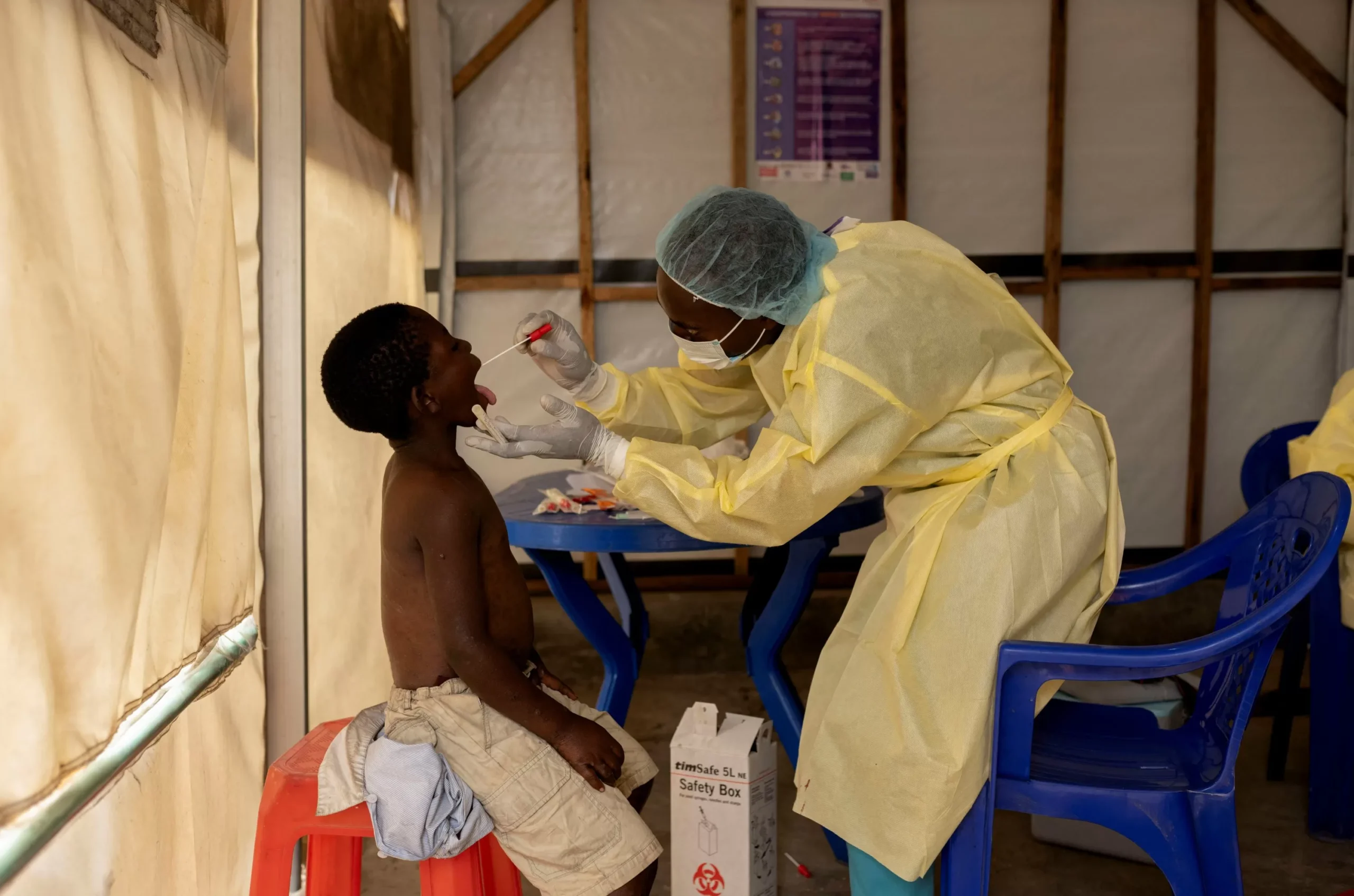Kenya and the Central African Republic have recently reported new outbreaks of smallpox, a highly contagious and potentially deadly disease. This news has sparked concern among health officials across Africa, who are now working tirelessly to contain the spread of the disease in a region with limited resources.
Smallpox, also known as variola, is caused by the variola virus and is characterized by a high fever, body aches, and a rash that turns into pus-filled blisters. It is highly contagious and can be transmitted through direct contact with an infected person or through the air. The disease was declared eradicated in 1980, thanks to a global vaccination campaign, but recent outbreaks have raised concerns about its resurgence.
The first case of smallpox in Kenya was reported in the eastern county of Kitui, where a 36-year-old woman was diagnosed with the disease. She had recently traveled to the Central African Republic, where she is believed to have contracted the virus. The woman is currently receiving treatment at a hospital in Nairobi, and health officials are working to identify and monitor anyone who may have come into contact with her.
In the Central African Republic, the outbreak was first reported in the capital city of Bangui, where three cases were confirmed. The country’s health ministry has declared a state of emergency and is working with international organizations to contain the spread of the disease. The affected individuals are currently in isolation and receiving treatment, and efforts are being made to vaccinate those who may have been in contact with them.
These new outbreaks have highlighted the importance of vaccination in preventing the spread of smallpox. However, in many African countries, access to vaccines is limited, and this poses a significant challenge in controlling the disease. The World Health Organization (WHO) has sent a team of experts to both Kenya and the Central African Republic to support the local health authorities in their efforts to contain the outbreaks.
In Kenya, the government has launched a mass vaccination campaign in the affected areas, targeting over 1 million people. This is a crucial step in preventing the further spread of the disease and protecting the population from smallpox. The WHO has also provided technical support and supplies, including vaccines and protective equipment, to aid in the vaccination efforts.
In the Central African Republic, the situation is more complex due to ongoing conflict and instability. The country’s health system is already strained, and the recent outbreak has put additional pressure on the limited resources. However, the government, with the support of the WHO and other international organizations, is working to contain the disease and prevent it from spreading to other regions.
Despite the challenges, there is hope that these outbreaks can be contained and the disease can be eradicated once again. The swift response from the affected countries and the support from the international community are crucial in this fight against smallpox. It is also a reminder of the importance of investing in healthcare systems and ensuring access to vaccines for all.
The WHO has emphasized the need for continued vigilance and surveillance to detect and respond to any new cases of smallpox. This is especially important in countries with weak health systems and limited resources. The organization has also urged countries to strengthen their preparedness and response plans for potential outbreaks of other infectious diseases.
In conclusion, the recent outbreaks of smallpox in Kenya and the Central African Republic are a cause for concern, but they have also highlighted the resilience and determination of the affected countries and the international community in fighting against this disease. With continued efforts and collaboration, we can overcome this challenge and ensure a healthier and safer future for all. Let us all do our part by staying informed, getting vaccinated, and supporting the efforts to control the spread of smallpox in Africa.





![Complete BritRail Pass Guide [Types, How to Use It, Pros + Cons]](https://inside-news.uk/wp-content/uploads/2025/06/00221EB4-BCA2-4DBB-6CD4-83DBC37D71FA-120x86.webp)












